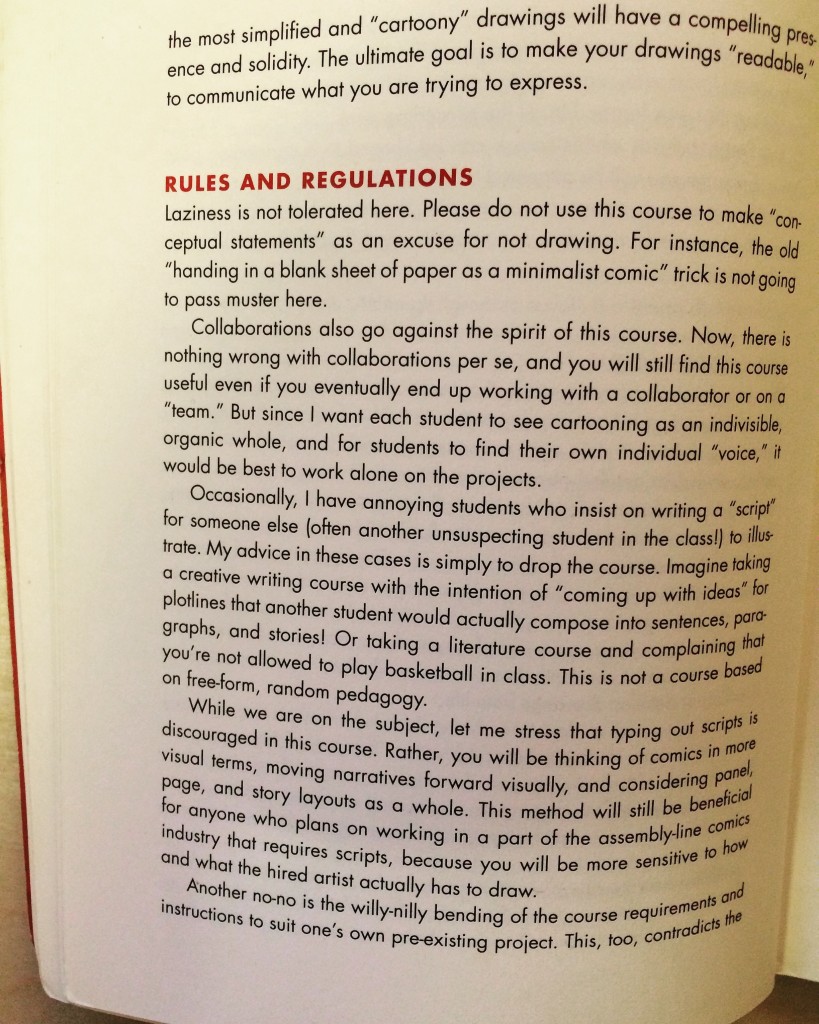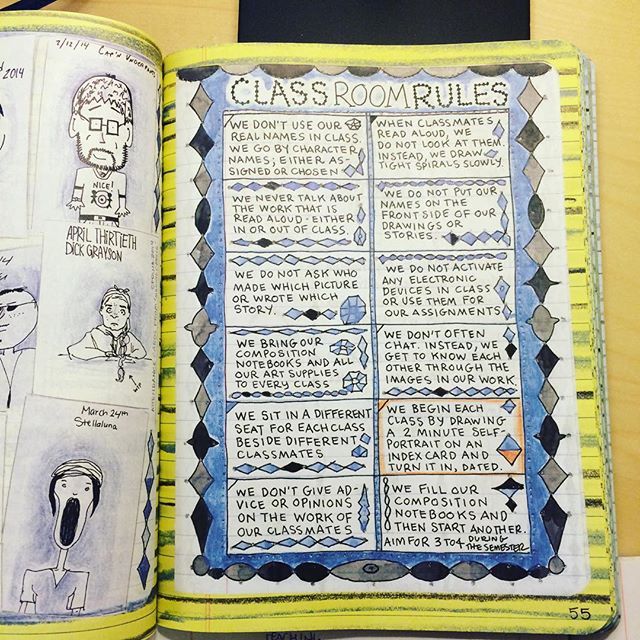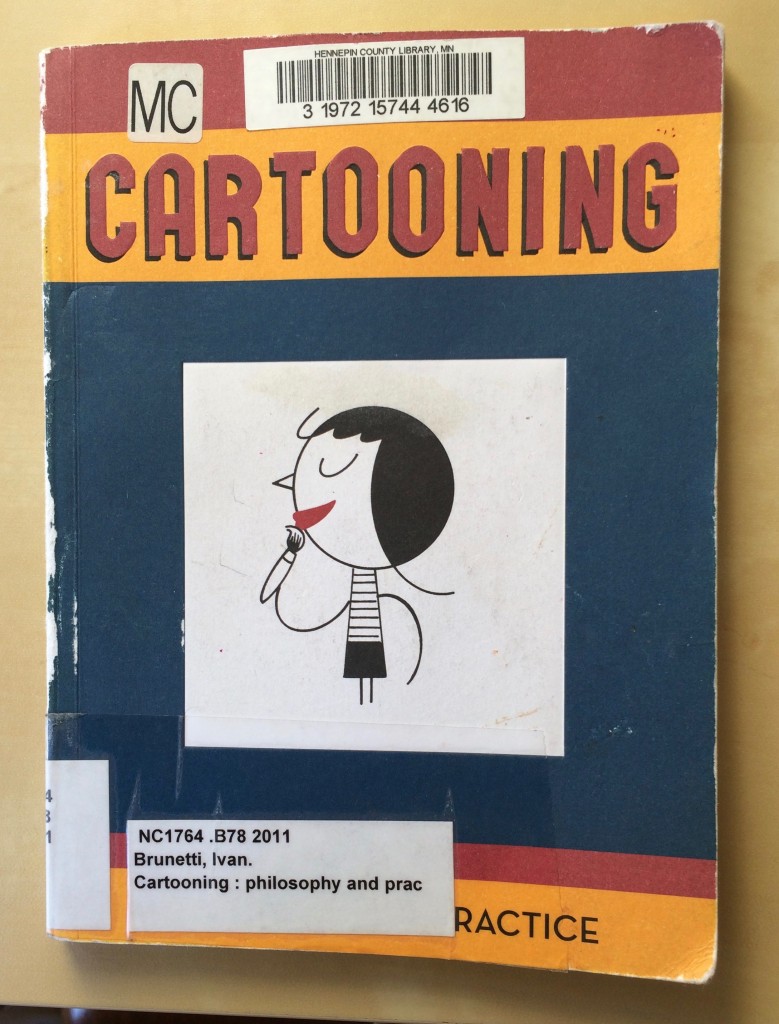Cartooning: Philosophy and Practice
What
A syllabus with fifteen week-long lessons on learning how to draw and “write with pictures.”
Format
- “Formal” syllabus at beginning
- 15 lessons
Content
- Syllabus contains: course description, lesson plan, required texts, terminology, the sketchbook, rules and regulations, useful tools, a few words on computers
- Sections of syllabus included commentary and personal reflections
- Lessons contain: explanation of key concept, several exercises, homework
- Minimal illustrations/cartoons
- Mostly (small, typed–is it futura?) text
- 1 page appendix with recommended books
Purpose
This ‘classroom in a book’ provides the aspiring cartoonist with a practical means for creative self-discovery and the exploration of complex ideas through the iconic visual language of comics (1).
About this Book
Useful for my book?
In quickly reviewing this book, I’m inspired to think again about structuring my project as a syllabus. But, would it work as well? I especially like how he incorporates his philosophy and personal reflections into his introduction and syllabus parts. He also includes some snark. It almost feels like an intervention into the syllabus-as-usual (dry, boring, boiler-plate, overly practical).
I’m struck by the differences between Brunetti’s and Barry’s tone/approach. Barry cites Brunetti as one of her key mentors. Part of the differences are because these are different projects. Brunetti’s book is an actual syllabus with lessons, while Barry’s book is a collection of reflections on and artifacts from her syllabi/classes. But, there’s more to the differences between their books.


While Barry’s pages were crammed with images, doodles and hand-written and typed text, Brunetti’s pages are sparse with a simple typed font and lots of white space. His images are almost exclusively on separate pages, not mixed in with the text like Barry’s are. Both exude a passion for teaching and drawing, but Barry expresses her passion with more enthusiasm and vigor (as evidenced through her reflections, illustrations and gushing notes about/to students), while Brunetti employs sarcasm, self-deprecating humor and the ridiculing of “bad” students.*
*note: I’m basing my assessment of Brunetti on his syllabus and a very brief look at his 15 lessons. Since I’m thinking about “taking” his course, I don’t want to spoil it by reading ahead.
I would like my tone to be somewhere between these two, enthusiastic without too much gushing (and crowded images/text) or too much cynical distance (and sparse pages).
